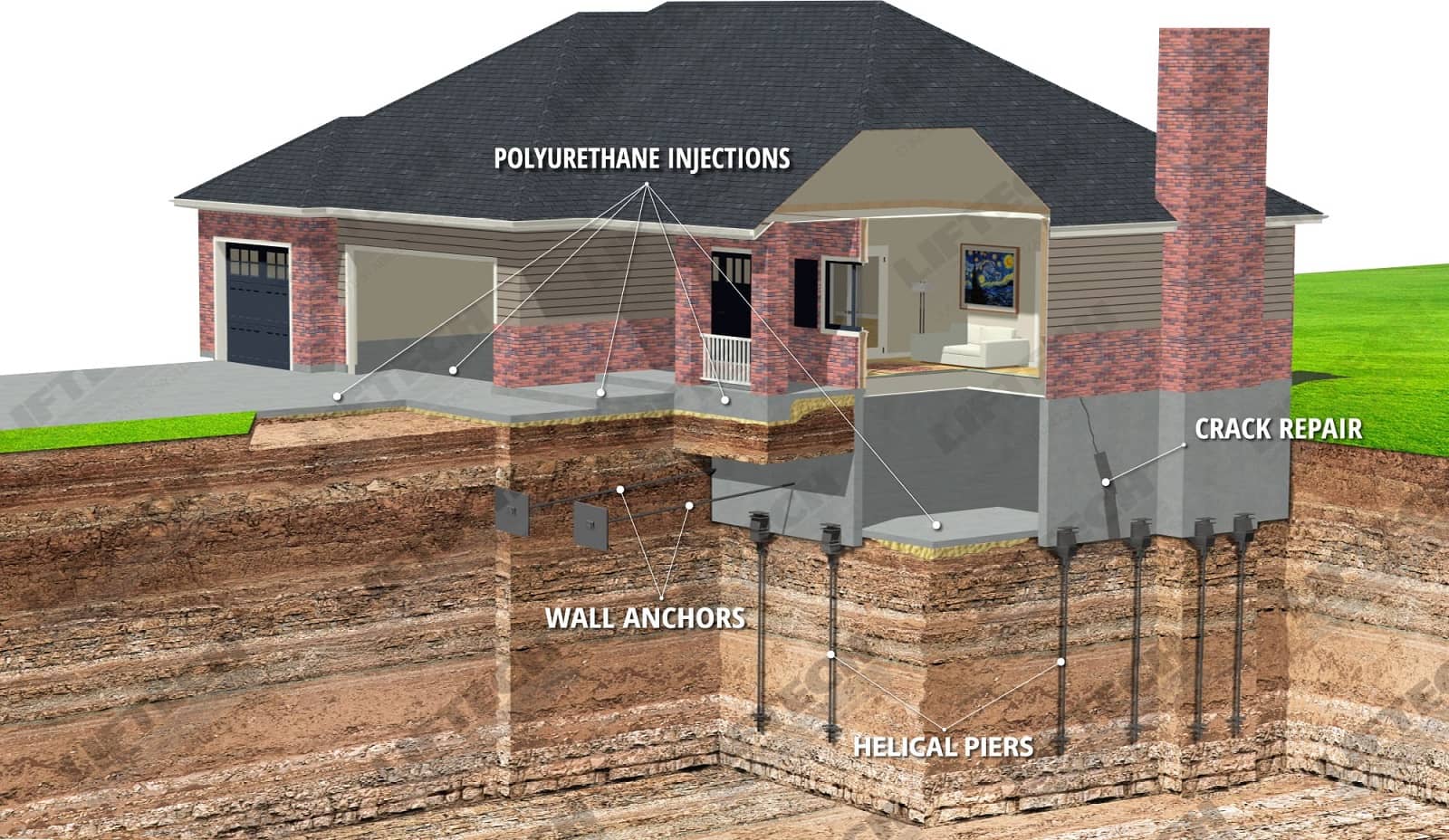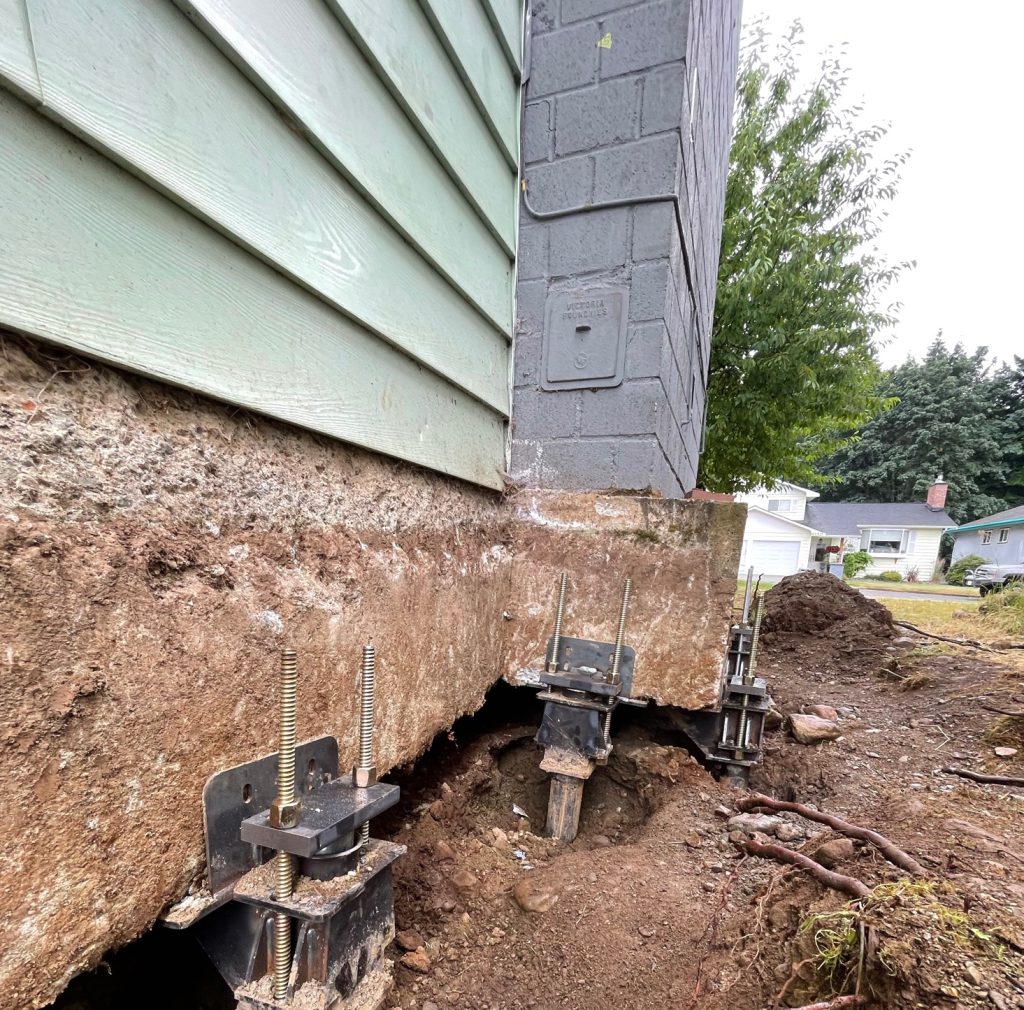Checking Out Various Methods of Foundation Repair for Different Soil Types
Foundation fixing is a vital facet of maintaining architectural stability, particularly when considering the diverse challenges posed by different soil kinds. The complexity of dirt habits under differing problems requires a customized approach to repair, making sure optimal remedies such as helical piers for unstable dirts or chemical cements for cohesive layers.
Comprehending Dirt Types
Dirt kinds play a crucial duty in the security and durability of building foundations, making it crucial for house owners and building and construction specialists to comprehend their characteristics and actions. The interaction between dirt and foundation can identify the architectural honesty of a building. There are a number of soil kinds, each with distinctive physical buildings that affect how structures are made and preserved.
Granular dirts, such as sand and crushed rock, offer excellent drainage and are commonly considered stable. They have high load-bearing capacities, which can support much heavier structures. Nonetheless, these dirts can shift if not compressed effectively, resulting in possible settlement problems. In contrast, cohesive soils like clays and silts exhibit various actions. These dirts have a tendency to preserve dampness, and their load-bearing capability can differ significantly with adjustments in moisture content.
Rocky soils, recognized for their strength and security, offer exceptional assistance for structures but may require specific devices for excavation. Conversely, fertile dirts, which are a well balanced combination of sand, silt, and clay, usually provide positive conditions for structure assistance due to their moderate drain homes.

Understanding these dirt types is critical for choosing suitable foundation repair work techniques, ensuring the longevity and safety and security of structures with time.
Difficulties With Large Clay
Amongst the different dirt kinds, large clay presents special obstacles for structure stability due to its propensity to undertake significant volume modifications with moisture variation. This type of soil swells when wet and contracts when completely dry, which can put in significant stress on frameworks. These changes can lead to structure cracking, heaving, and negotiation problems, presenting significant risks to the structural stability of buildings.
The challenges with extensive clay are aggravated by its plasticity index, which gauges the soil's capacity to change shape and quantity. A high plasticity index suggests greater possibility for movement, increasing the chance of damage to foundations. This is particularly troublesome in regions experiencing severe or frequent climate modifications, where cycles of wet and completely dry problems prevail.
Moreover, the deepness of expansive clay layers can differ, making complex the analysis and preparation of proper structure repair service methods. These complexities require an extensive geotechnical assessment to ensure reliable foundation repair service strategies are applied, stressing the significance of addressing large clay difficulties with competence and treatment.
Solutions for Sandy Soils
Sandy dirts, identified by their big particle dimension and reduced communication, existing distinct difficulties for foundation security because of their propensity for moving and erosion. These residential or commercial properties demand specialized structure repair work methods to ensure architectural honesty. One efficient option is making use of deep foundation systems such as helical piers or driven heaps. By securing the structure to much deeper, more secure dirt layers, these systems can provide the needed support to counteract the shifting nature of sandy dirts.
One more recommended approach is the application of soil stabilization methods. Chemical grouting, for example, entails injecting a supporting agent right into the soil, which boosts communication and lowers permeability. This procedure aids to solidify the sandy substrate, therefore lessening the threat of erosion and movement.
In addition, mounting appropriate drainage systems is important in sandy dirt problems. Making sure ample water drainage can protect against water buildup around the foundation, which typically worsens disintegration and soil variation. Methods such as French drains pipes or surface area grading can be used to route water away from the structure perimeter.
Resolving Working Out in Loamy Soils
Loamy soils, understood for their well balanced mix of clay, silt, and sand, offer a productive base for many More about the author frameworks however can often bring about foundation settling because of their one-of-a-kind composition. This balanced texture supplies exceptional drain and nutrient retention, making it suitable for farming and landscaping. This exact same feature can end up being troublesome for structures, as changes in moisture content can cause the soil to broaden or contract, leading to clearing up.
Precise dirt screening is important to figure out the details make-up and dampness content of the loam. Once information is gathered, carrying out correct drain solutions is essential to maintain regular wetness levels, thus lowering the threat of dirt tightening or expansion.

Cutting-edge Fixing Methods
In the world of foundation fixing, ingenious methods are constantly being developed to resolve the complicated tests posed by different soil conditions. As dirt types differ dramatically in their structural residential properties, standard techniques may not always are adequate. The introduction of brand-new innovations in foundation repair service gives much more tailored options, guaranteeing security and durability.
One remarkable development is the use of helical piers, which are particularly effective in large or unsteady soils (foundation repair okc). These piers are screwed right into the ground until they get to a secure layer of soil, offering solid support for the foundation above. This approach lessens interruption and is adaptable to different dirt types, making it a flexible option
Another cutting-edge technique is the application of polyurethane foam injection. This technique includes injecting high-density polyurethane foam under the foundation to fill up spaces and maintain the structure. It is a less invasive alternative to look at here now typical base, providing quick installation with minimal disturbance to the surrounding area.
Furthermore, soil stablizing techniques, such as using chemical cements, have actually obtained grip. These compounds enhance dirt stamina and decrease permeability, avoiding future shifting. Collectively, these innovative repair work methods give effective options for the diverse difficulties postured by differing dirt problems.
Verdict

Structure fixing is an essential element of maintaining architectural stability, particularly when thinking about the varied difficulties presented by different soil kinds (foundation repair oklahoma city). The intricacy of dirt habits under differing conditions requires a tailored approach to repair, guaranteeing optimal solutions such as helical piers for unsteady soils or chemical grouts for cohesive layers. By securing the structure to deeper, more steady dirt layers, these systems can supply the required assistance to neutralize the shifting nature of sandy soils
Structure repair needs cautious consideration of dirt kinds to make certain stability and durability. Chemical grouts enhance dirt stamina and decrease leaks in the structure in natural soils.